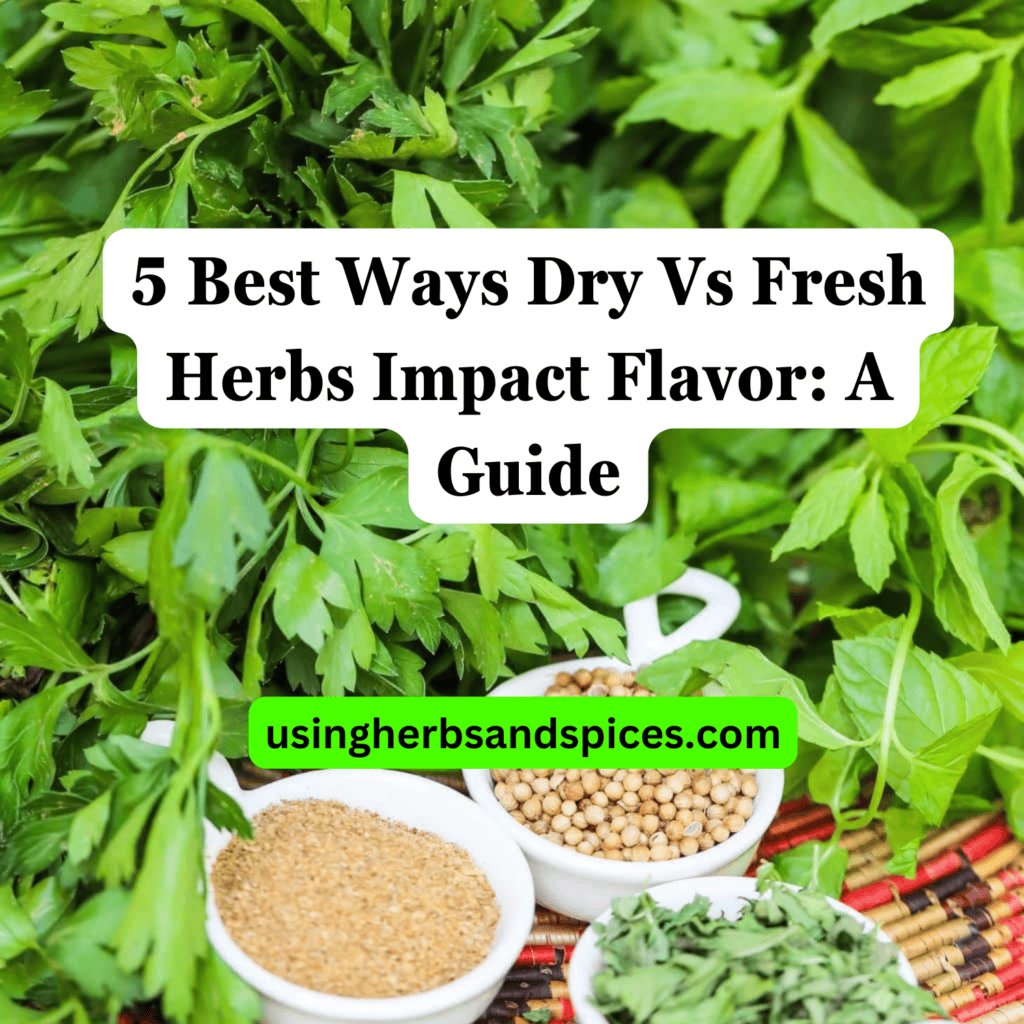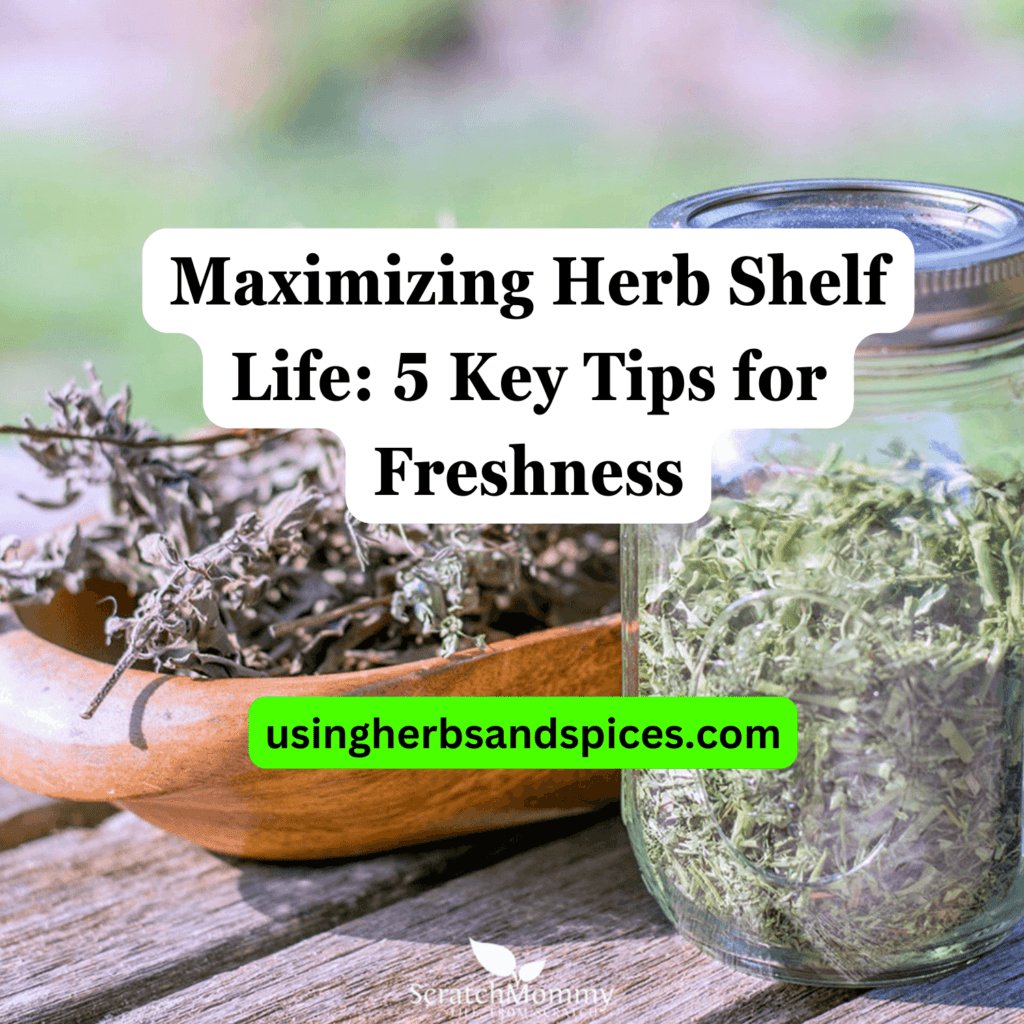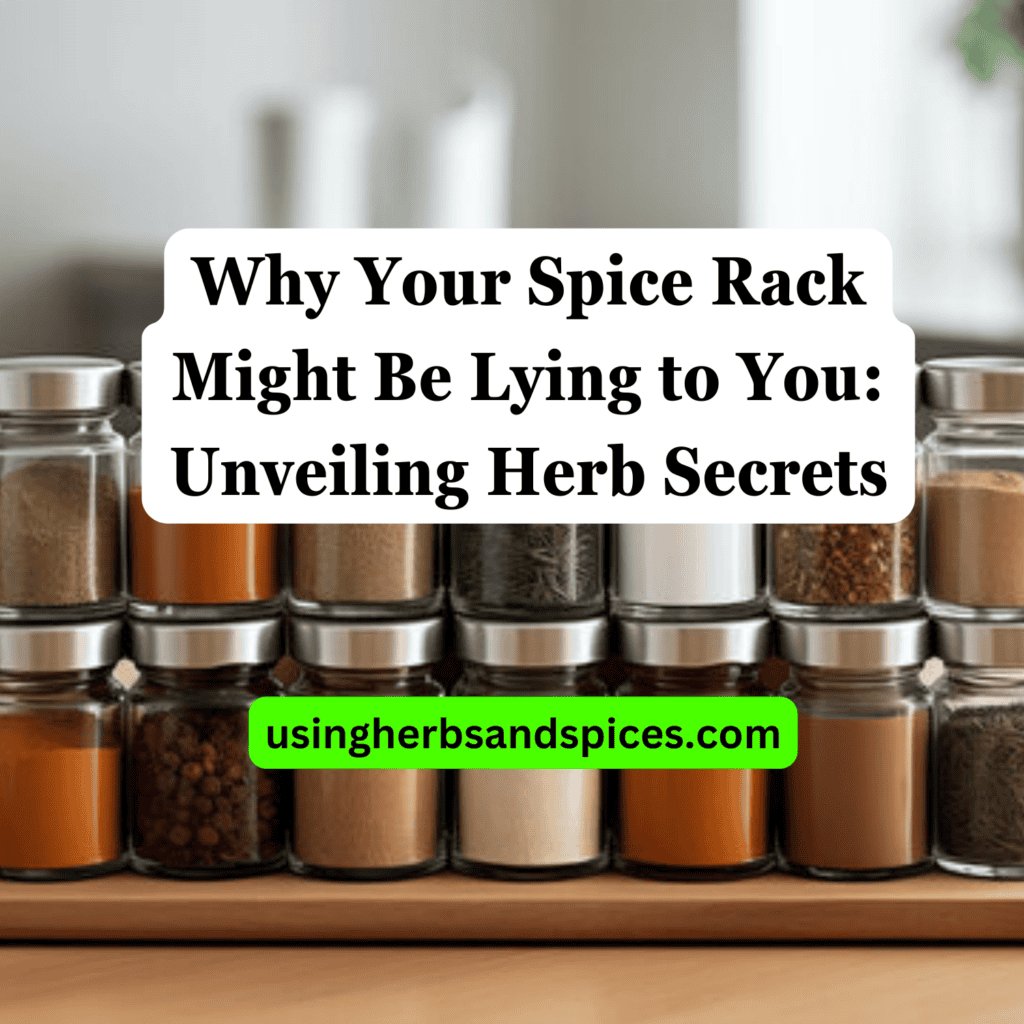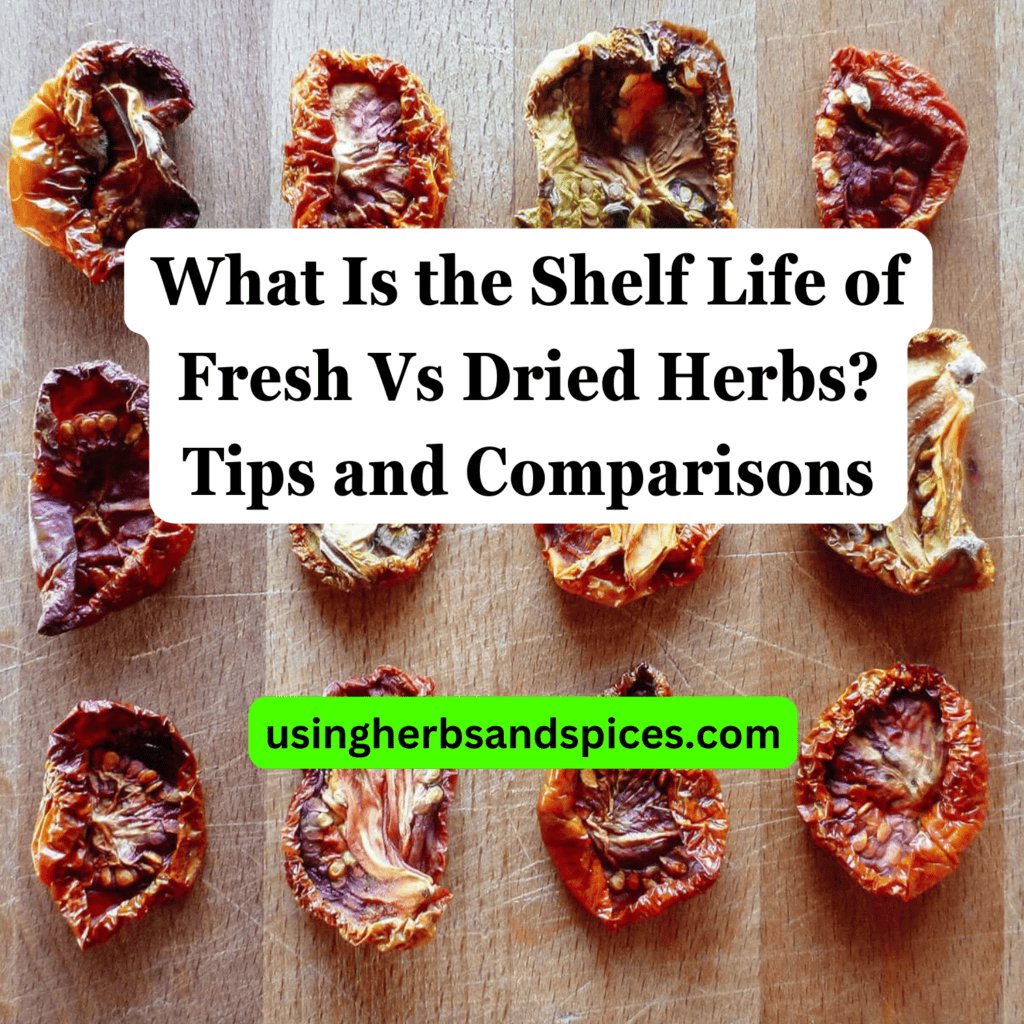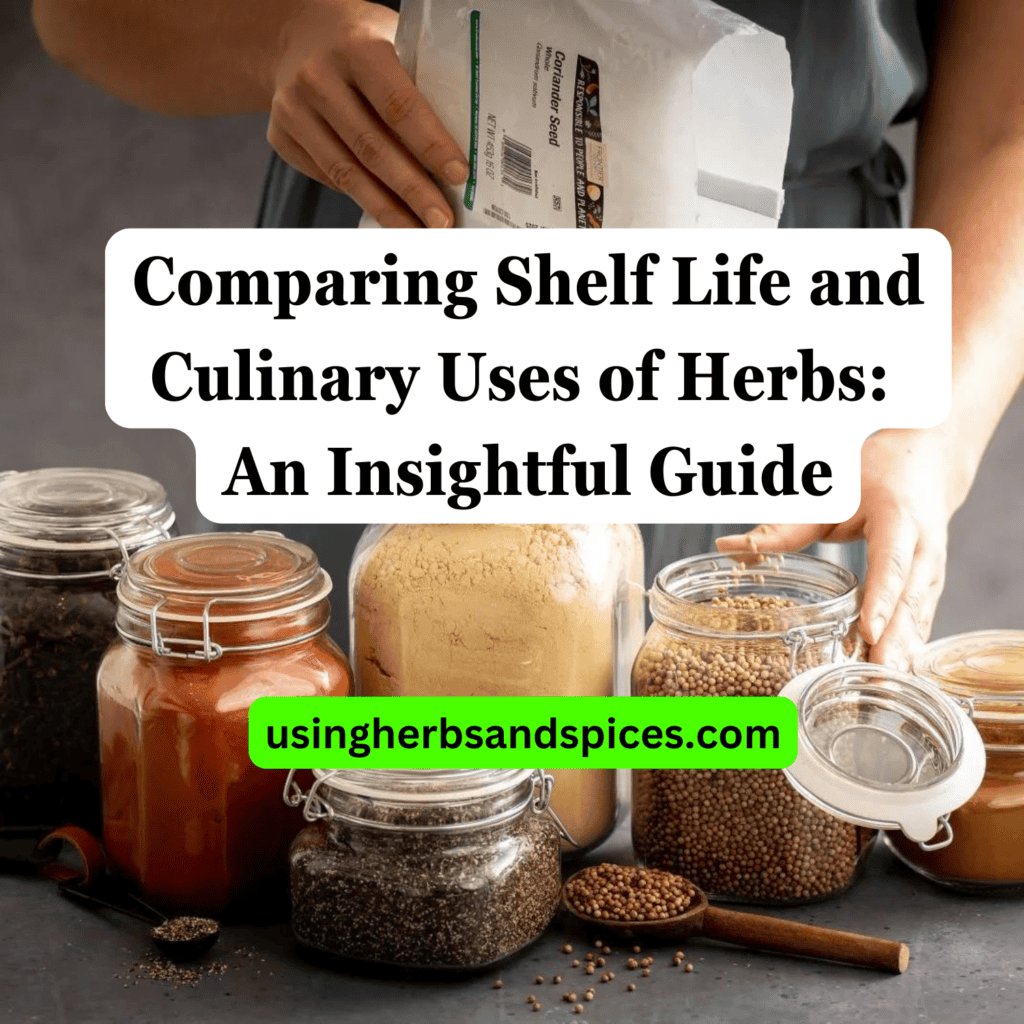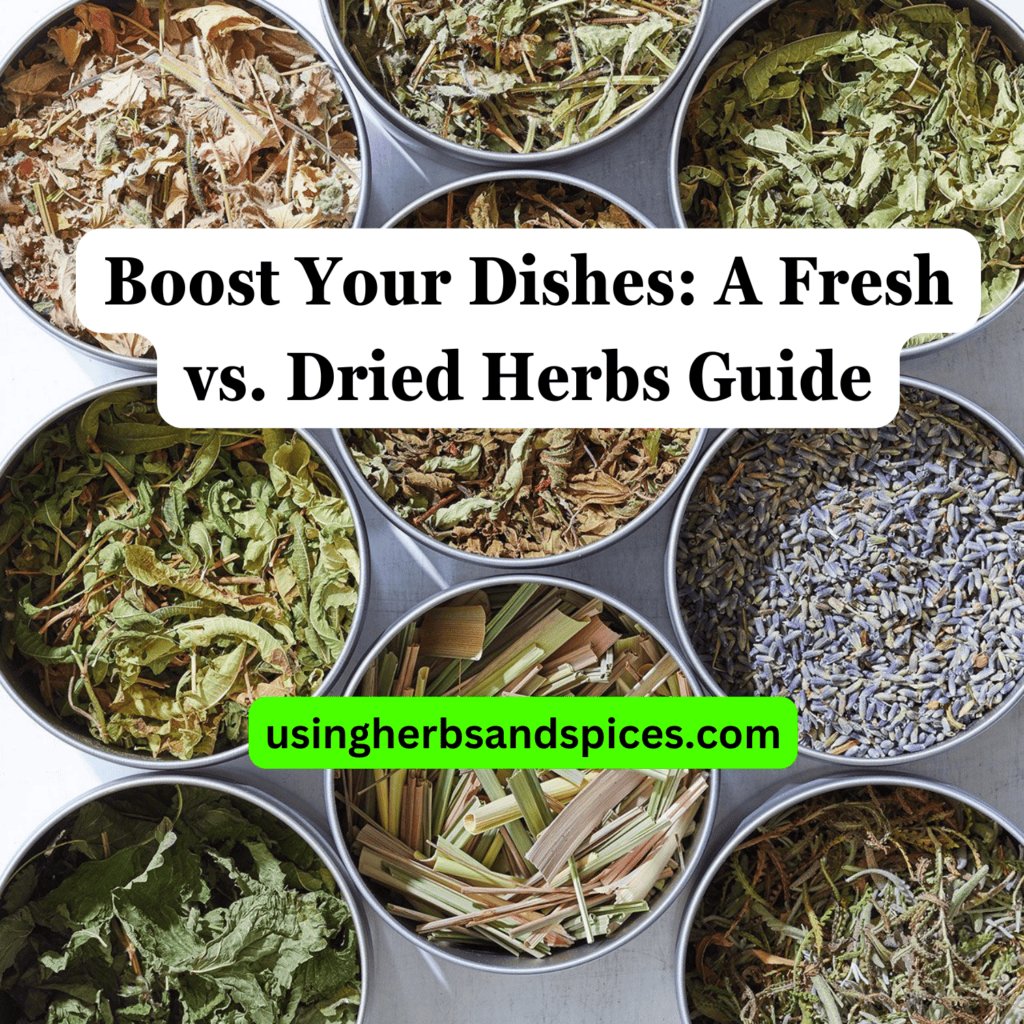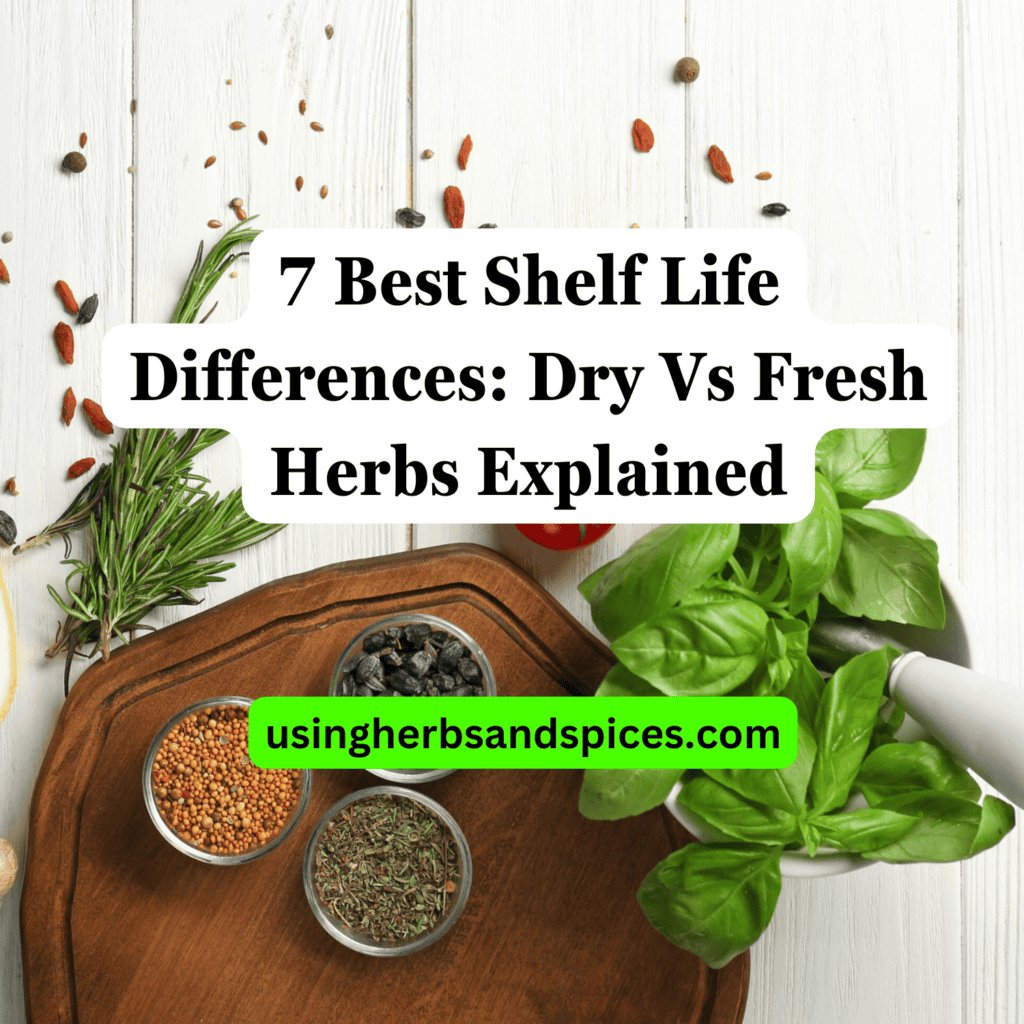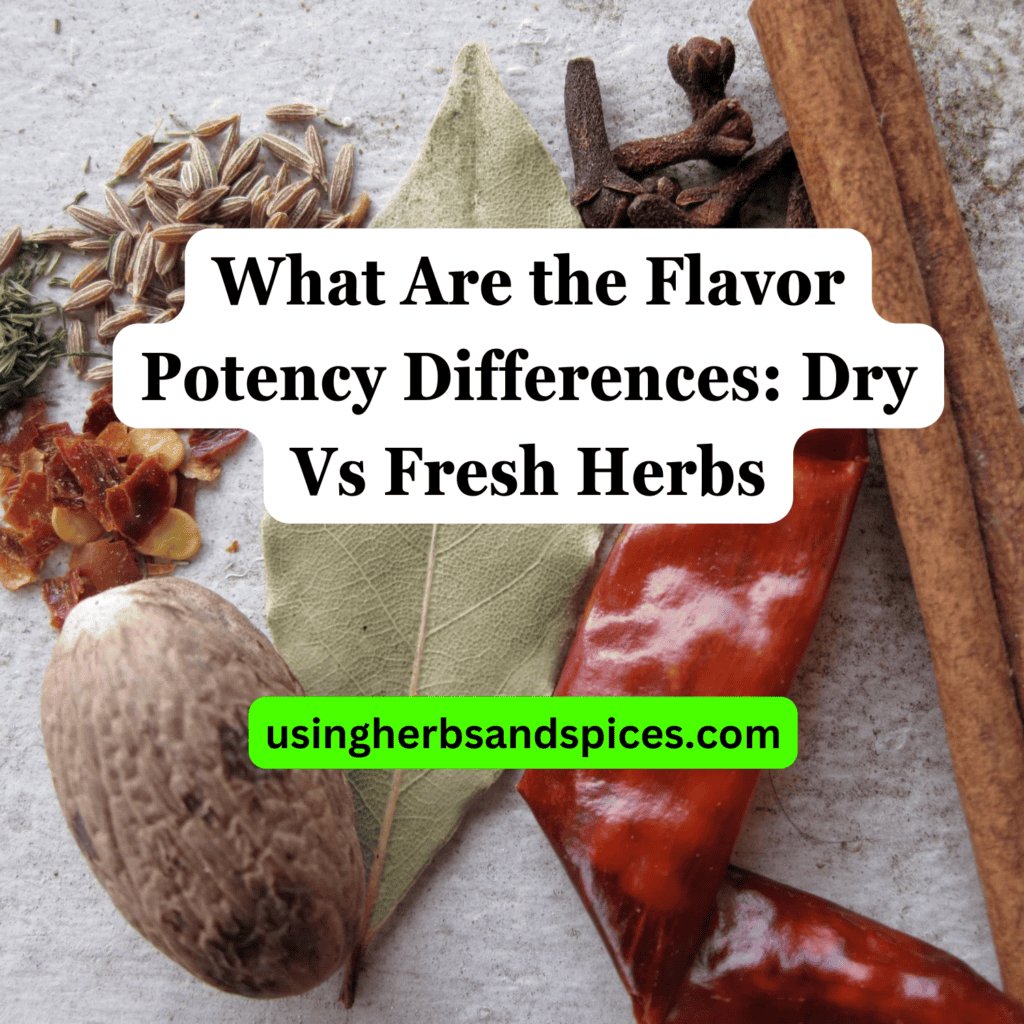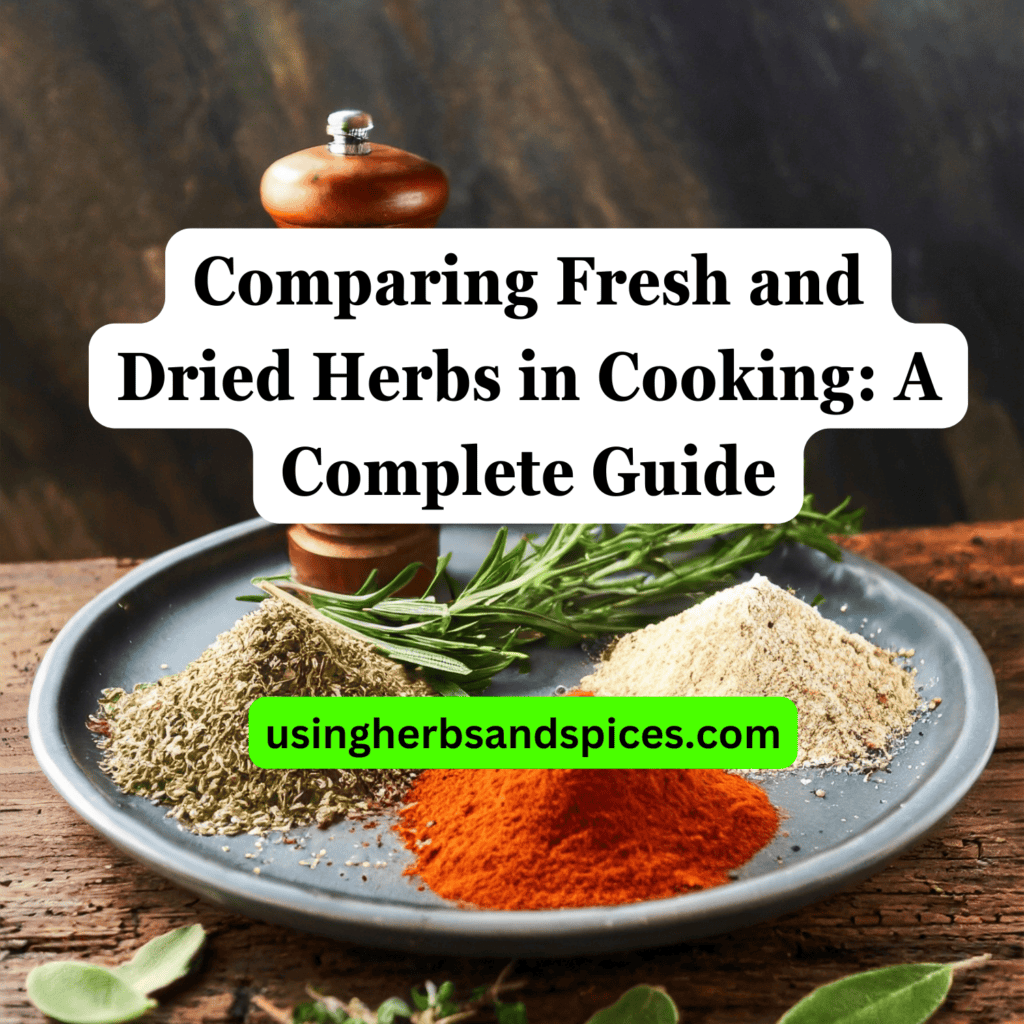SUMMARY: Dry herbs offer a concentrated flavor making them potent in smaller quantities, whereas fresh herbs provide a vibrant and aromatic taste demanding greater use to achieve desired flavor profiles.
Ever find yourself wondering if your dishes could taste better with either fresh or dried herbs?
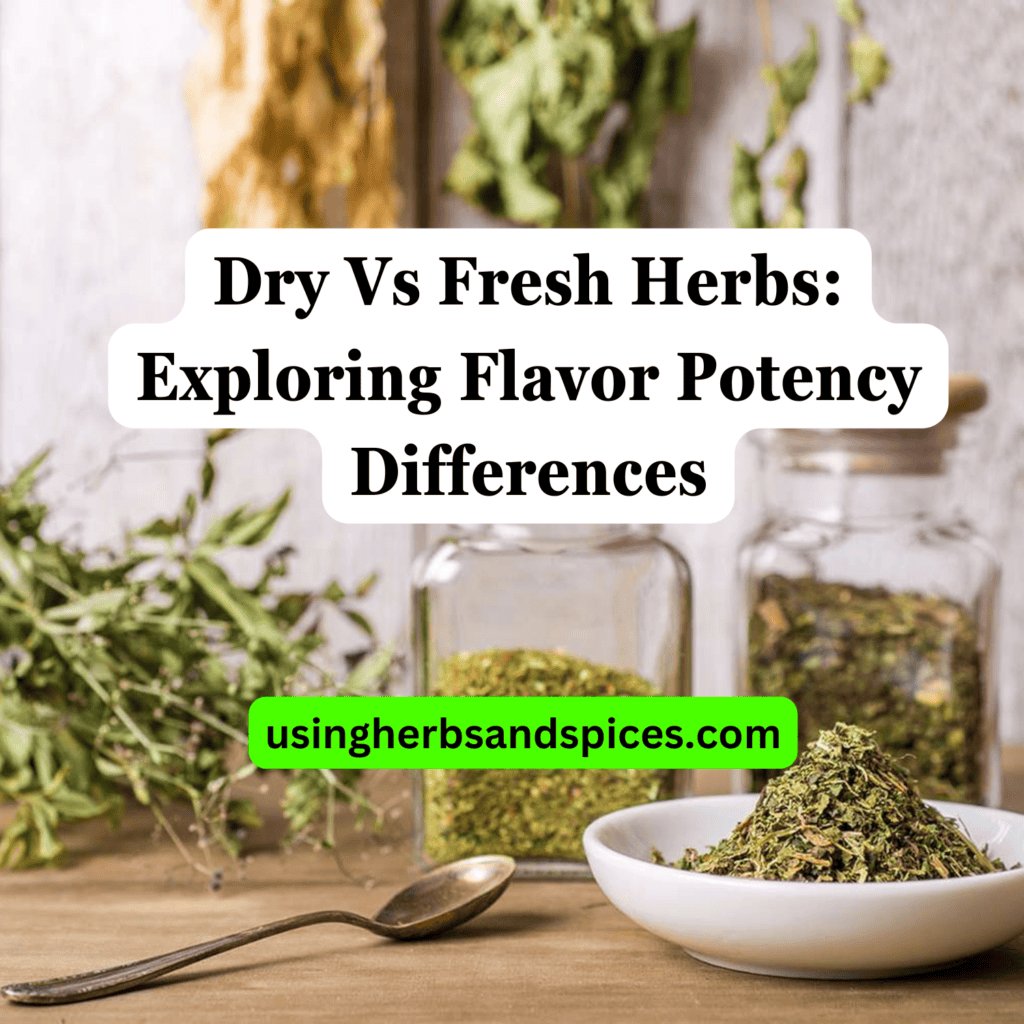
You’re not alone in facing this culinary conundrum.
- The fundamental differences between dried and fresh herbs.
- How each type of herb affects flavor and aroma in dishes.
- When to ideally use dried herbs versus fresh ones.
- Practical tips for maximizing the potency and flavor of both herb types.
Continue reading to discover how to harness the full potential of herbs in your cooking, ensuring you make the right choice every time.
The Fundamentals of Dry Herbs: Understanding Concentration and Preservation
Dried herbs have been a staple in the pantry for centuries, revered for their ability to withstand the test of time without losing their essence. The process of drying herbs effectively evaporates moisture while concentrating their flavors, oils, and aromas. This concentration results in a more potent flavor compared to fresh herbs, meaning a smaller quantity of dried herbs is required to achieve the desired taste profile in dishes.
Preservation not only extends the shelf life of herbs but also alters their texture and intensifies their aroma. The lack of moisture in dried herbs enables easy storage for extended periods, making them a convenient option for those looking to infuse depth and complexity into their cooking, anytime of the year. However, it’s crucial to remember that the potency of dried herbs diminishes over time, so they should be replaced regularly for the best flavor impact.
Embracing the fundamental differences in flavor concentration and preservation between fresh and dried herbs can significantly elevate your culinary creations, providing a robust foundation for exploring various cuisines and recipes.
Fresh Herbs: A Burst of Flavor and Aroma With Every Use
Fresh herbs are often celebrated for their vibrant flavor and potent aroma, which can significantly enhance the taste profile of various dishes. Fresh herbs contain essential oils that are responsible for their distinct flavors and smells. When herbs are fresh, these oils are at their peak concentration, offering a burst of flavor that is often described as ‘bright’ or ‘vivid’. This makes fresh herbs especially valuable in culinary applications where their freshness can be a central element of the dish.
Unlike their dried counterparts, fresh herbs are best added towards the end of the cooking process or used as a garnish. This preserves their delicate flavors and aromas, which can be diminished or lost under prolonged exposure to heat. Fresh herbs are particularly popular in cuisines that prioritize fresh and bright flavors, such as Mediterranean, Southeast Asian, and various Latin culinary traditions.
In terms of flavor potency, fresh herbs tend to have a more nuanced profile compared to the intense, concentrated flavors of dried herbs. The freshness offers a complexity and depth that can elevate a dish without overpowering it. However, the shelf life of fresh herbs is significantly shorter than that of dried herbs, presenting a challenge in terms of storage and longevity.
Incorporating fresh herbs into meals not only boosts flavor but also adds a visual appeal and can contribute to the nutritional value of the dish, as they are a source of various vitamins and minerals. To fully leverage the benefits of fresh herbs, it is crucial to understand their unique characteristics and how they differ from their dried alternatives.
Comparative Analysis: Dry vs. Fresh Herbs in Culinary Use
When exploring the realms of dry and fresh herbs in culinary applications, it’s essential to understand their inherent differences and how these impact flavor potency in dishes. Dry herbs, due to their concentrated nature, often pack a more robust flavor per teaspoon compared to their fresh counterparts. This concentration is a result of the dehydration process, which removes the water content from the herbs, leaving behind a more potent array of essential oils and flavors.
On the other hand, fresh herbs offer a bright, vibrant flavor profile that can bring a burst of freshness to any dish. Their potency is not just in the intensity of flavor but also in the quality of the aromatic experience they provide. Fresh herbs are often added towards the end of the cooking process or used as garnish to preserve their delicate flavors and aroma.
The choice between dry and fresh herbs can significantly affect the outcome of a recipe. For instance, the concentrated flavors of dry herbs are ideal for slow-cooked dishes where they have ample time to rehydrate and infuse the dish with their essence. Conversely, fresh herbs are better suited for light, quick dishes where their fresh, aromatic qualities can shine without being overpowered by prolonged cooking.
It’s also important to consider the ratio of dry to fresh herbs when substituting one for the other. A general guideline is to use one part dry herbs to three parts fresh, due to the difference in flavor potency. This adjustment ensures that the dish maintains its intended flavor profile, whether using dry or fresh herbs.
Ultimately, the choice between dry and fresh herbs rests on the desired flavor intensity, the cooking method being employed, and the specific qualities of the herb in question. Understanding these nuances allows for more informed decision-making and creativity in culinary endeavors.
Optimizing Flavor: Best Practices for Using Dry and Fresh Herbs
Maximizing the flavor of your dishes with herbs, whether they are dry or fresh, requires understanding the best practices for their use. Here are some essential tips to help optimize the flavor potency of herbs in your culinary creations:
- Timing of Addition: Incorporate dry herbs early in the cooking process. This allows them enough time to rehydrate and release their concentrated flavors into the dish. Fresh herbs, on the other hand, should generally be added towards the end of cooking. This preserves their vibrant color, delicate flavors, and aromatic qualities.
- Proper Storage: To maintain the potency of dry herbs, store them in a cool, dry place away from direct sunlight. Fresh herbs can be stored in the refrigerator; some may last longer when placed in a glass of water like a bouquet. Proper storage is essential to preserving their flavor and extending their shelf life.
- Preparation Techniques: When using fresh herbs, bruising or gently crushing them before adding to your dish can help release their essential oils, thus enhancing their flavor. Dry herbs might benefit from being crushed between the fingers before use, which can help reactivate their dormant flavors.
- Quantity Adjustments: Because dry herbs are more concentrated, use them in smaller quantities than fresh herbs. A good rule of thumb is to use one part dried herb to three parts fresh herb when substituting one for the other.
- Experimentation is Key: Don’t be afraid to experiment with different herbs and adjust quantities to suit your taste preferences. Taste testing as you cook is the best way to ensure the desired flavor outcome.
By adhering to these best practices, you can enhance and fully utilize the distinct flavors of both dry and fresh herbs, ensuring your dishes are always vibrant and tasteful.
Mastering the Art of Flavor With Dry and Fresh Herbs
In this exploration of dry versus fresh herbs, we’ve unearthed fundamental insights that both novice and seasoned cooks can leverage to enhance their culinary creations.
- Dry herbs offer a concentrated flavor that is ideal for slow-cooking processes and dishes that simmer for longer periods.
- Fresh herbs provide a vibrant burst of flavor best suited to finishing dishes or for use in fresh preparations like salads.
- The flavor potency of dry herbs is more pronounced than that of fresh herbs, necessitating a careful balance when substituting one for the other.
- Understanding the distinct characteristics of dry and fresh herbs enables cooks to make informed decisions on how to best utilize them to achieve desired culinary outcomes.
By embracing the unique qualities of both dry and fresh herbs, one can not only elevate the flavor profile of their dishes but also master the intricate art of seasoning. Whether you’re aiming to infuse deep, robust flavors or to accentuate your meal with a delicate hint of herbal freshness, being mindful of these differences ensures every dish is a testament to your culinary acumen.
Dry Vs Fresh: Flavor Potency Differences Explained FAQs
What are the key differences in flavor potency between dry and fresh herbs?
The key differences in flavor potency between dry and fresh herbs lie in their concentration and aromatic profiles. Dry herbs, due to their reduced water content, offer a more concentrated flavor, making them suitable for dishes that cook longer. In contrast, fresh herbs provide a vibrant and lighter taste, perfect for adding a fresh burst of flavor to finished dishes.
How should one decide when to use dry or fresh herbs?
Deciding when to use dry or fresh herbs depends on the dish you’re preparing and the desired flavor outcome. Use dry herbs in dishes that require a longer cooking time or those that can absorb the concentrated flavors over time. Fresh herbs are best added towards the end of cooking or in fresh preparations to capture their full, aromatic potential.
Can dry herbs replace fresh herbs in all cooking situations?
No, dry herbs cannot replace fresh herbs in all cooking situations due to differences in flavor intensity and texture. When substituting, keep in mind that dry herbs are more potent. The general rule of thumb is one tablespoon of fresh herbs equals one teaspoon of dry herbs. However, some dishes specifically benefit from the fresh texture and vibrant color of fresh herbs, which dry herbs cannot provide.

